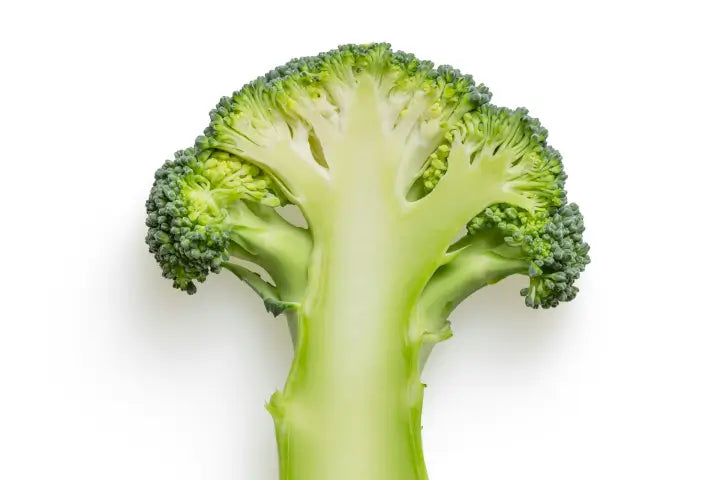Sulforaphane and Your Body: The Ultimate Guide to This Potent Antioxidant

Understanding Sulforaphane
Sulforaphane is an isothiocyanate derived from sulfur-containing glucosinolates found primarily in cruciferous vegetables. First discovered in the early 1990s, it emerged from studies investigating broccoli’s remarkable cancer-preventive properties. In its inactive form, sulforaphane exists as glucoraphanin, a stable precursor housed within plant cells.
When plant tissues are disrupted—by chopping, chewing, or crushing—the enzyme myrosinase converts glucoraphanin into bioactive sulforaphane. This remarkable transformation underlies the interest in sprouted and lightly cooked crucifers as potent dietary sources. Understanding this precursor relationship is key to maximizing intake from vegetables like broccoli, kale, and Brussels sprouts.
Mechanism of Action
Sulforaphane exerts its health-promoting effects primarily through two interconnected pathways:
- Activation of Phase II Detoxification Enzymes: Sulforaphane triggers the Nrf2 signaling pathway, which upregulates a suite of antioxidant and detoxification enzymes such as glutathione S-transferase, NAD(P)H quinone dehydrogenase 1, and heme oxygenase-1. By boosting these phase II defenses, cells become more adept at neutralizing reactive metabolites and carcinogens.
- Modulation of Cellular Signaling: Beyond detoxification, sulforaphane influences signaling cascades involved in inflammation, apoptosis, and cell cycle regulation. For instance, it can inhibit NF-κB, a transcription factor linked to pro-inflammatory gene expression, while promoting protective pathways that support controlled cell turnover and stress resilience.

Health Benefits
A. Antioxidant Defense
One of the hallmark attributes of sulforaphane is its role in bolstering the body’s antioxidant network. By neutralizing free radicals, it helps preserve the integrity of essential biomolecules:
- Free radical neutralization: Sulforaphane-dependent enzymes scavenge reactive oxygen species, reducing oxidative stress.
- Protection of lipid, protein and DNA integrity: Enhanced glutathione synthesis prevents lipid peroxidation and shields proteins and DNA from oxidative damage, supporting cellular longevity.
B. Anti-Inflammatory Effects
Chronic inflammation underlies numerous health challenges, and sulforaphane’s ability to balance inflammatory mediators can be pivotal:
- Regulation of pro- and anti-inflammatory mediators: By dampening NF-κB activity and upregulating anti-inflammatory cytokines, sulforaphane fosters a more balanced immune response.
- Impact on immune cell function: Macrophages and other immune cells exhibit reduced release of harmful enzymes and reactive species when exposed to sulforaphane, supporting tissue repair and resilience.
C. Support for Detoxification
Sulforaphane’s induction of both phase I and phase II enzyme systems enhances the body’s capacity to process and eliminate toxins. This dual action promotes biotransformation of lipophilic contaminants into water-soluble forms for excretion, contributing to overall detoxification efficiency.
D. Role in Chronic Disease Prevention
Emerging evidence suggests that regular intake of sulforaphane-rich foods may support long-term health:
- Potential cardiovascular support: Improved endothelial function and reduced oxidative stress can assist in maintaining healthy blood pressure and vascular tone.
- Implications for neurodegenerative and metabolic disorders: Early data indicate protective effects on neuronal health and improved insulin sensitivity, highlighting sulforaphane’s role in mitigating risk factors for conditions like Alzheimer’s and type 2 diabetes.
Natural Precursors and Food Sources
Incorporating key cruciferous vegetables is the simplest way to tap into sulforaphane foods. These include:
- Broccoli and broccoli sprouts
- Brussels sprouts
- Kale and mustard greens
- Cabbage and cauliflower
Broccoli sprouts health benefits often outshine mature heads due to their higher glucoraphanin concentration—sometimes up to 20–50 times greater. Below is a comparison table of common sources:
| Vegetable | Approximate Glucoraphanin Content (μmol/100g) |
|---|---|
| Broccoli sprouts | 2,000 |
| Broccoli florets | 300 |
| Brussels sprouts | 150 |
| Kale | 100 |
Preparation techniques to maximize precursor availability include chopping or crushing raw vegetables to activate myrosinase. Light steaming (under 60 seconds) can preserve enzyme activity while improving palatability.
Factors Influencing Bioavailability
- Chopping, crushing and gentle heating: Mechanical disruption releases precursors and enzymes, while brief steaming preserves conversion capacity more effectively than boiling.
- Role of gut microbiota and digestive enzymes: Even when plant myrosinase is inactivated, certain gut bacteria can generate sulforaphane, underscoring the importance of a diverse microbial community.
Dietary Strategies to Maximize Intake
To leverage Sulforaphane supplements or whole-food sources, consider:
- Meal planning tips for regular inclusion: Add a handful of broccoli sprouts to salads, smoothies, or sandwiches several times per week.
- Pairing with complementary foods to boost conversion: Combining cooked crucifers with fresh mustards or radish sprouts reintroduces myrosinase and promotes sulforaphane production.
Conclusion
Sulforaphane emerges as a compelling bioactive compound with multifaceted roles in antioxidant defense, inflammation modulation, detoxification support, and chronic disease prevention. By understanding its chemical nature, activation mechanisms, and optimal food sources, individuals can strategically enhance their dietary patterns. Whether through fresh broccoli sprouts, lightly steamed florets, or the thoughtful combination of myrosinase-containing foods, integrating sulforaphane-rich choices into daily meals is both practical and rewarding. While ongoing research will further illuminate its broad health impacts, current evidence strongly supports the inclusion of these vegetables as part of a balanced diet. Embracing sulforaphane-rich ingredients represents a proactive step toward nurturing long-term wellness and cellular resilience.
FAQs
What does sulforaphane do for the body?
Sulforaphane activates detox enzymes, boosts antioxidant defenses, regulates inflammation, and supports cellular repair pathways to promote overall health.
What are the downsides of sulforaphane?
Mild digestive discomfort may occur with high intake of cruciferous vegetables. Additionally, enzyme interactions could affect metabolism of certain medications.
What food has the highest sulforaphane?
Broccoli sprouts contain the highest levels of glucoraphanin, the precursor that converts into sulforaphane, compared to mature broccoli and other crucifers.
How many milligrams of sulforaphane per day?
There is no established daily requirement. Most benefits are observed through regular consumption of sulforaphane foods rather than precise milligram dosages.
